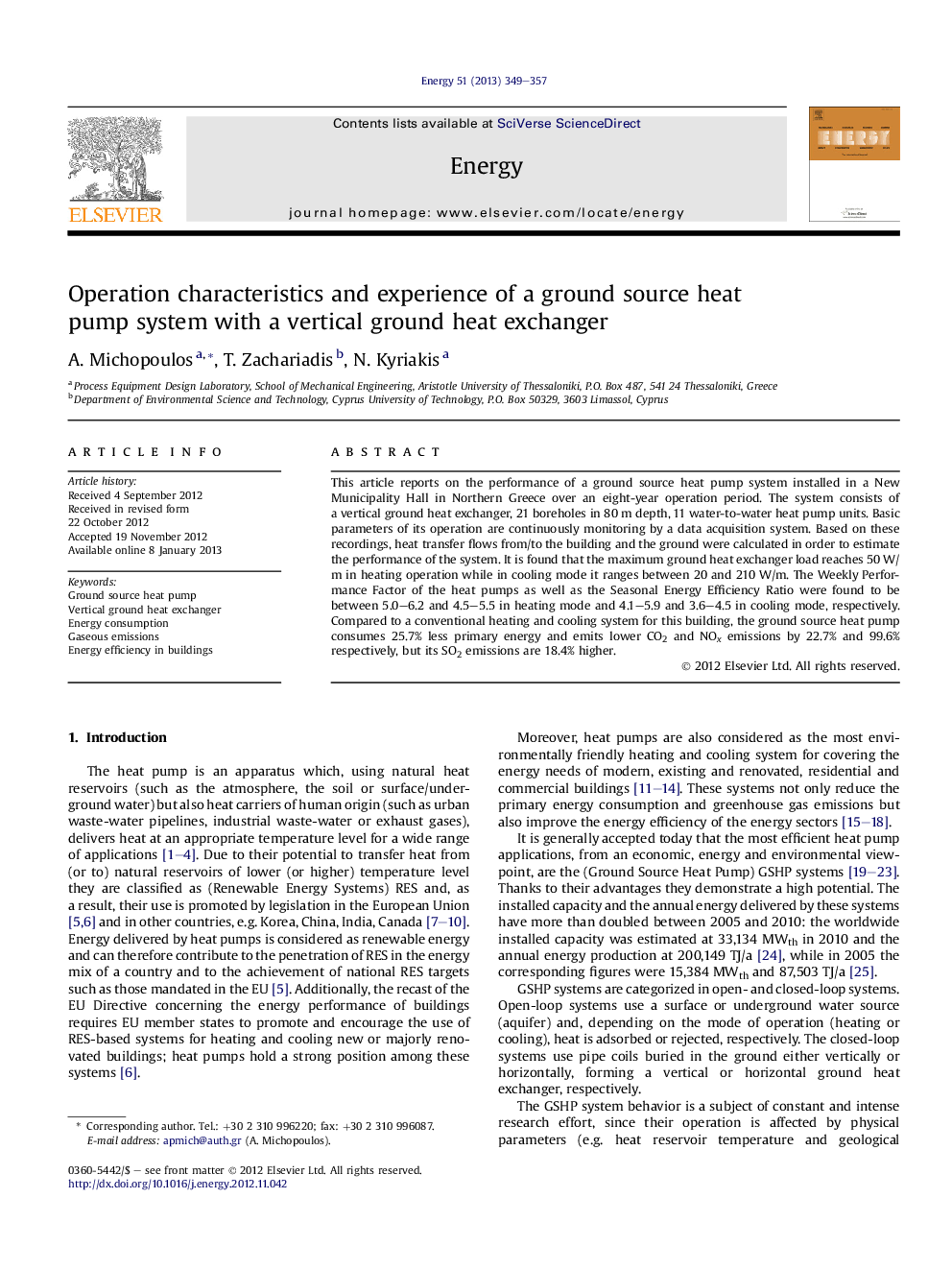| Article ID | Journal | Published Year | Pages | File Type |
|---|---|---|---|---|
| 1733189 | Energy | 2013 | 9 Pages |
This article reports on the performance of a ground source heat pump system installed in a New Municipality Hall in Northern Greece over an eight-year operation period. The system consists of a vertical ground heat exchanger, 21 boreholes in 80 m depth, 11 water-to-water heat pump units. Basic parameters of its operation are continuously monitoring by a data acquisition system. Based on these recordings, heat transfer flows from/to the building and the ground were calculated in order to estimate the performance of the system. It is found that the maximum ground heat exchanger load reaches 50 W/m in heating operation while in cooling mode it ranges between 20 and 210 W/m. The Weekly Performance Factor of the heat pumps as well as the Seasonal Energy Efficiency Ratio were found to be between 5.0–6.2 and 4.5–5.5 in heating mode and 4.1–5.9 and 3.6–4.5 in cooling mode, respectively. Compared to a conventional heating and cooling system for this building, the ground source heat pump consumes 25.7% less primary energy and emits lower CO2 and NOx emissions by 22.7% and 99.6% respectively, but its SO2 emissions are 18.4% higher.
► Report a GSHP (ground source heat pump) system performance over an 8 years operation period. ► SEER (Seasonal Energy Efficiency Ratio) ranges between 4.5–5.5 and 3.6–4.5 in heating and cooling mode. ► Heat extraction rate from the soil reaches up to 210 W/m of borehole. ► GSHP system consumes substantially less primary energy and emits lower CO2 and NOx.
